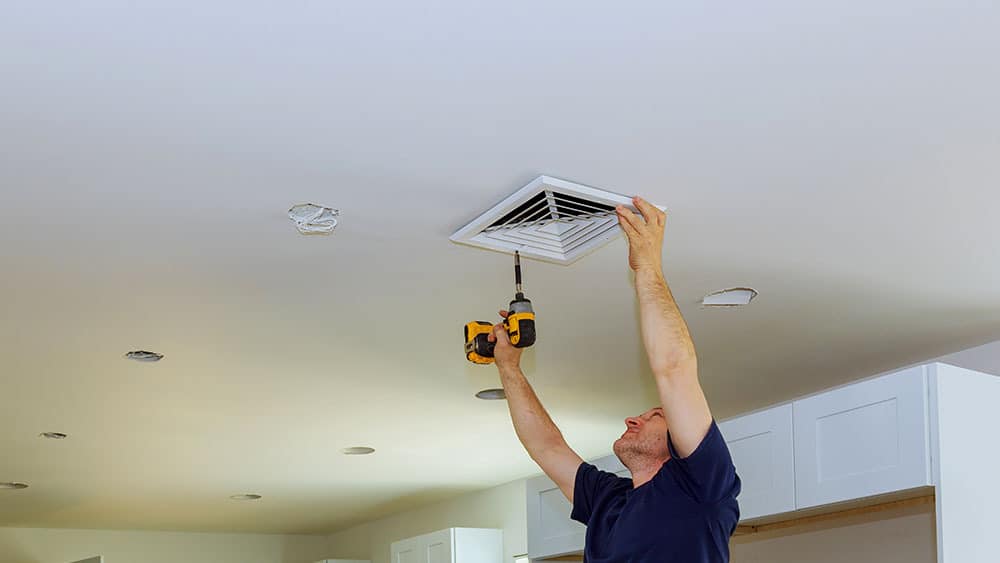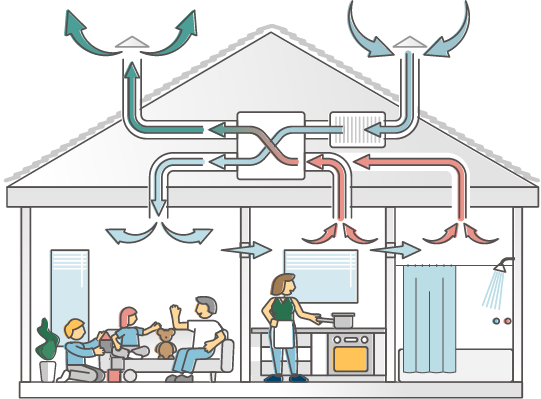Recognizing the Relevance of Home Ventilation for a Healthier Living Atmosphere
Home air flow plays a vital role in preserving a healthy and balanced living setting. It assists in the exchange of outside and indoor air, which is essential for enhancing air quality. Without correct ventilation, homes can come to be breeding premises for allergens and contaminants. The consequences of insufficient air circulation can be substantial. This raises the query of exactly how property owners can properly apply ventilation techniques to safeguard their health and wellness and wellness. Comprehending these methods is imperative.

The Basics of Home Air Flow
Home ventilation acts as a vital element of indoor air top quality and convenience. It entails the procedure of trading stale indoor air with fresh outdoor air, therefore minimizing moisture and managing temperature. Appropriate air flow systems can consist of natural techniques, such as open home windows and vents, along with mechanical systems, such as exhaust fans and air exchangers. Efficient home air flow assists prevent issues like interior mold and mildew development and the build-up of harmful bits. It also boosts total energy efficiency, as well-ventilated spaces can keep comfortable temperatures with less dependence on heating and cooling systems. Understanding the basics of home air flow is essential for home owners looking for to produce a much healthier living atmosphere for themselves and their households.

Common Sources of Indoor Air Pollution

Lots of may not realize it, indoor air contamination can originate from various sources within a home. Common contributors consist of volatile organic substances (VOCs) given off from paints, solvents, and cleaning items. Household devices, such as gas stoves and fire places, can release hazardous gases like carbon monoxide and nitrogen dioxide. In addition, mold and mildew and mold flourish in wet locations, releasing spores that affect air top quality. Family pet dander, allergen, and plant pollen can gather inside, more exacerbating air pollution levels. Smoking inside produces harmful chemicals that linger in the air. Finally, constructing materials, including asbestos and formaldehyde, can off-gas harmful substances. Acknowledging these sources is crucial for preserving a healthier indoor setting and promoting efficient ventilation techniques.
Wellness Impacts of Poor Air Flow
Interior air pollution can have considerable wellness implications, especially when air flow is inadequate. Poor air flow can lead to the buildup of damaging pollutants, such as unpredictable natural compounds, mold, and particulate matter. This accumulation may lead to respiratory system concerns, consisting of asthma, allergies, and chronic obstructive pulmonary illness. Individuals might experience signs and symptoms like frustrations, tiredness, and irritability of the eyes, nose, and throat. Vulnerable populaces, such as kids and the senior, go to greater danger for extreme health and wellness results. Long-term direct exposure to inadequately aerated settings can additionally add to a lot more significant conditions, including cardio conditions. Subsequently, ensuring appropriate ventilation is important for preserving a healthy living environment and lowering the danger of health problems related to indoor air pollution.
Reliable Air Flow Techniques for Your Home
Correct air flow is vital for preserving a healthy and balanced interior atmosphere, and carrying out reliable approaches can substantially boost air high quality. Homeowners can begin by guaranteeing that exhaust followers are set up in shower rooms and kitchens to eliminate excess dampness and odors. Opening up windows regularly permits fresh air to distribute, especially throughout light weather condition. Additionally, using air cleansers with HEPA filters can aid catch airborne pollutants. For homes with home heating and cooling down systems, preserving a/c systems and transforming filters frequently is essential for peak efficiency. Incorporating natural ventilation strategies, such as cross-ventilation, can also boost air flow. Securing any type of leakages in home windows and doors stops undesirable drafts, which can interrupt regulated air flow, inevitably leading to boosted indoor air quality and comfort.
Preserving Optimal Air Quality Year-Round
To keep excellent air quality year-round, property owners must embrace an aggressive strategy to handling their interior atmosphere. Consistently keeping track of indoor air quality is important; this consists of monitoring for pollutants such as dirt, mold, and unpredictable natural substances (VOCs) Applying effective ventilation systems, such as exhaust fans and air purifiers, can considerably minimize air-borne pollutants. In addition, routine upkeep of a/c systems guarantees peak efficiency and air flow. Homeowners ought to Source additionally consider moisture degrees, as extreme dampness can bring about mold and mildew development. Seasonal adjustments might require changes in air flow techniques to accommodate differing outdoor air quality. By focusing on these practices, homeowners can develop a much healthier space, advertising total health for all owners throughout the year.
Frequently Asked Questions
Exactly How Can I Tell if My Home Requirements Much Better Air Flow?
To figure out if a home requires far better ventilation, one need to observe indications such as consistent humidity, mold and mildew development, mildewy smells, condensation on windows, or enhanced allergy signs, suggesting inadequate air flow and potentially bad indoor air high quality.
What Are the Signs of Poor Indoor Air High Quality?

Can Houseplants Improve Indoor Air High Quality Efficiently?
The effectiveness of houseplants in enhancing indoor air high quality is debated. While some studies recommend they can absorb contaminants and generate oxygen, their overall my site impact might be marginal contrasted to correct air flow and air filtering systems.
Exactly how Commonly Should I Modification My Air Filters?
The frequency of air filter modifications check it out commonly depends upon use and filter kind. Usually, it is recommended to change filters every 3 months, though households with allergic reactions or pets may call for more regular adjustments for optimal performance.
Are There Any Kind Of Details Ventilation Solutions for Allergy Sufferers?
Several air flow systems, such as HEPA-filtered units, effectively lower irritants in the air. Home Ventilation Melbourne. These systems trap dust, animal, and pollen dander, supplying allergic reaction sufferers with a cleaner, healthier interior environment while handling air top quality properly
It promotes the exchange of outdoor and indoor air, which is vital for enhancing air quality. Home air flow serves as a crucial element of indoor air top quality and convenience. It includes the process of trading stagnant indoor air with fresh outside air, therefore reducing humidity and managing temperature. Indoor air contamination can have substantial health ramifications, specifically when ventilation is inadequate. Appropriate air flow is important for preserving a healthy and balanced interior setting, and applying efficient approaches can substantially improve air high quality.